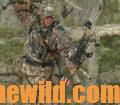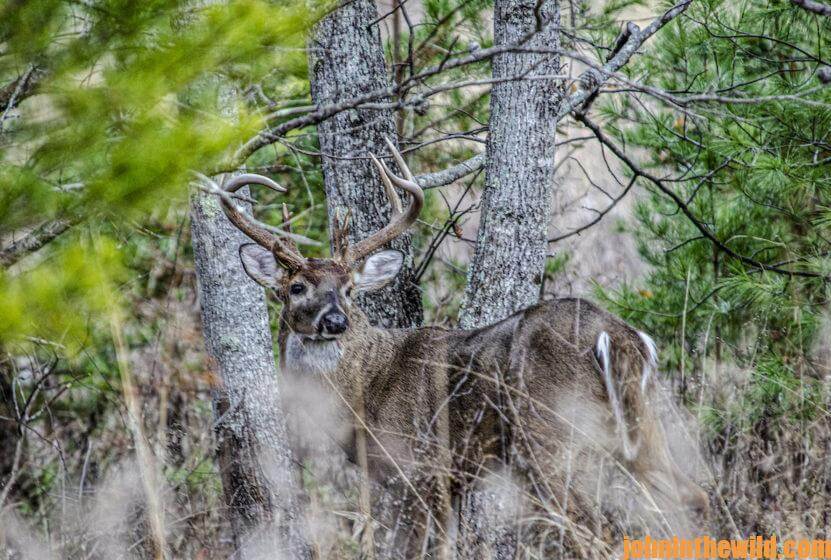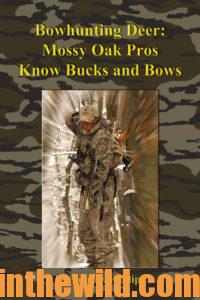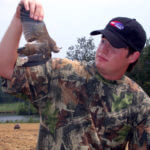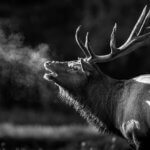Editor’s Note: Bowhunters can find all types of excuses for not hunting, for why hunting is difficult, and for what keeps them from being successful. Let’s look at some bowhunting situations with Bob Foulkrod, who is recognized nationwide as a master bowhunter. We’ve asked him to discuss how to deal with these problems, to see if we can improve our chances for taking whitetails.
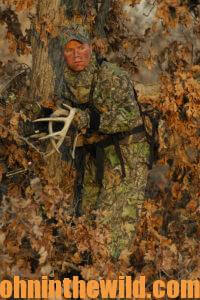 Dry Weather:
Dry Weather:
“Hunting during dry weather conditions just about eliminates stalk hunting,” Foulkrod explains. “But you do have to walk going to and away from your stand, which can spook deer. Remember, a man has a definite cadence to his step. A deer, however, has four feet, which makes a deer’s cadence altogether different from a man’s. A deer often sounds like two men walking through the woods rather than one. One of the ways to disguise your approach to and from your stand is to take smaller and more steps than you ordinarily do. Then you’ll sound more like a deer than a man. Another technique is to let a stick drag behind you as you walk, which also breaks-up the rhythm of your walking. Your best bet during dry-weather conditions is to spend as little time as you possibly can walking and as much time as you can in a tree.”
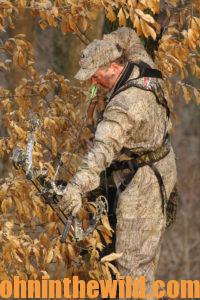 Long Shots:
Long Shots:
“Most bowhunters are going to take a shot at 30 yards or less,” Foulkrod says. “However, occasionally a big buck will come in at 40 yards. Then the hunter must make the decision of whether or not to take the shot. In my opinion, the only way a hunter ever should take that 40-yard shot is if he’s been practicing at that distance for a long time and knows for certain he can make that shot. The hunter must be convinced that that shot is not a gamble. If the bowhunter is only 50-percent accurate at 40 yards shooting at a target, then he has no business taking that shot. If he’s only 50-percent accurate on paper at that distance, and you take into account all the factors that affect someone who’s shooting at a deer rather than aiming at paper, the percentages are cut in half. Then the archer is probably only 25-percent effective at that range.
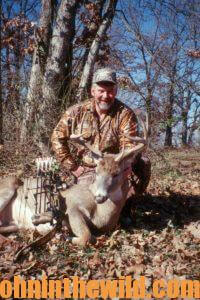 “Also remember, if the deer hears you draw the bow, he may take a step or move just as you prepare to shoot. The deer’s movement may mean you may have to hold the bow longer than you’ve anticipated, which will cut your accuracy tremendously. So resight, or wait for a better shot. Ninety percent of the time, if you take that 40-yard shot, more than likely, you’ll have a wounded animal you won’t recover. Most good bowhunters I know can’t live with that thought. If you have questions about taking a long shot, don’t shoot.”
“Also remember, if the deer hears you draw the bow, he may take a step or move just as you prepare to shoot. The deer’s movement may mean you may have to hold the bow longer than you’ve anticipated, which will cut your accuracy tremendously. So resight, or wait for a better shot. Ninety percent of the time, if you take that 40-yard shot, more than likely, you’ll have a wounded animal you won’t recover. Most good bowhunters I know can’t live with that thought. If you have questions about taking a long shot, don’t shoot.”
To learn more about hunting for deer, check out John E. Phillips’ bowhunting books, available in Kindle and print:“Bowhunting Deer: Mossy Oak Pros Know Bucks and Bows” (http://amzn.to/1QGvdQx) and “Bowhunting Deer: The Secrets of the PSE Pros” (http://amzn.to/VBr1qW). You may have to copy and paste these links into your browser. (When you click on the books, notice on the left where Amazon says you can read 10% of the books for free). To see more of John’s bowhunting books, visit www.amazon.com/author/johnephillips.
Tomorrow: Bagging a Deer Under Your Tree Stand


